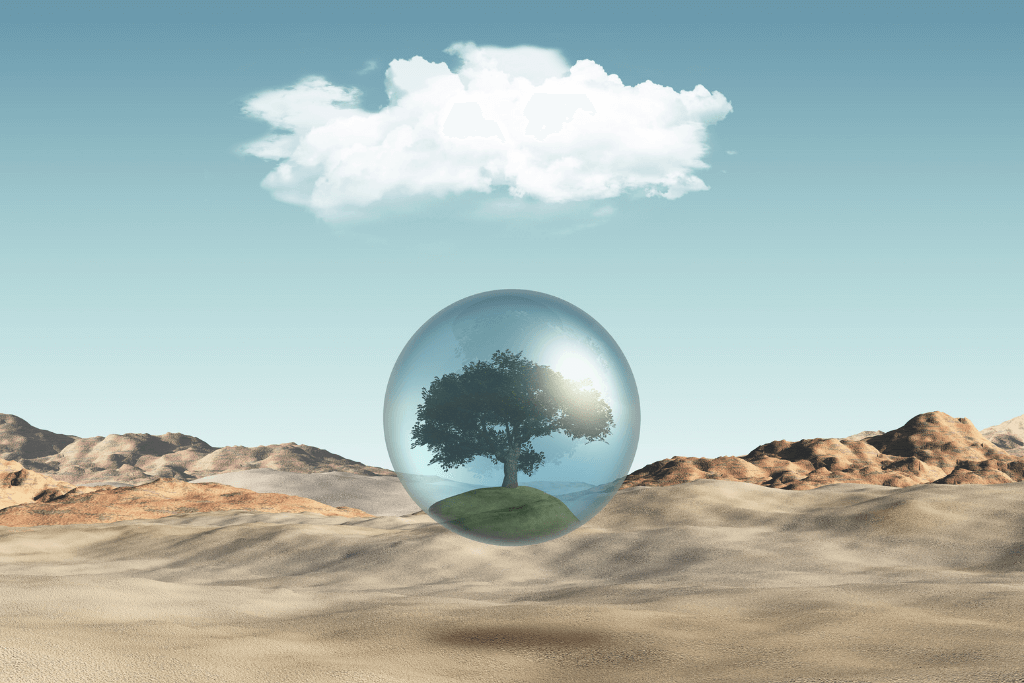Adaptation and Biodiversity

Adaptation and Biodiversity
In natural habitats, it is of great importance that animals and plants adapt to the environment through various adaptation processes. The adaptation process of animals in their natural habitats depends on the body structure, physiological characteristics, feeding habits, behaviors and environmental conditions of the species. Animals living in their natural habitat can survive by adapting to the environment and ensure the continuation of their species.
The biodiversity of plants is formed by the process of adapting to different climatic and geographical conditions. Plants create biodiversity by adapting to different environments. Regional plant species form endemic species as a result of the adaptation process. Endemic species are only found in a particular geographic area. Therefore, the protection of endemic species is of great importance for the continuation of natural habitats and biodiversity.
Animals and Natural Habitats
Animals go through various adaptation processes to maintain their lineage by adapting to their natural habitats. These processes evolve to enable animals to meet their basic needs such as nutrition, reproduction, defense and shelter. In the adaptation process of animals in their natural habitats, some species have a higher chance of survival, while others are less fortunate.
Access to suitable food sources for animals in their natural habitats, building suitable shelters and keeping their offspring safe are important factors for survival. For example, penguins adapt the color and structure of their feathers to live in cold climates and use them as a protector. Likewise, ostriches keep their young birds safe by burying their eggs in the stones around them.
- Some animal species have developed defense mechanisms to escape from risky situations. Badgers are known for their backs with spiky hairs to defend themselves against predators. Baby crocodiles also flee from predators by hiding themselves in underwater hiding places.
- Some animals gain an advantage by changing their shape according to their environment. In birds native to the region, which display camouflage features such as make-up, feather colors have evolved to adapt to the environment, providing a natural camouflage.
The destruction of their natural habitats disrupts the natural balance in this adaptation process, making it difficult for animals to adapt to life. Therefore, the conservation and sustainable use of natural habitats is vital for animals and other species.
Biodiversity of Plants
Plants are one of the most resilient creatures that adapt to changes in their environment. Plants adapt themselves to survive by making different choices for different climatic conditions in a particular region. This increases the importance of biodiversity creation processes by adapting plant species to different environments.
The processes by which plants adapt to different environmental factors can be seen in a wide variety of places, such as orchids in rainforests, flowers in natural grasslands, and plant species that grow at high altitudes in the mountains. Genetic changes, rapid evolution processes and different genetic variations play an important role in the adaptation process of plants. These factors increase the importance of seeds, plant extracts and juices in national and international markets as well as plants.
The spread of plants allows it to grow in many different climatic conditions throughout the world. Plants affected by these different climates evolve and adapt to environmental conditions. Plants that grow especially in coastal areas where the sun's rays are intense are known for their ability to store solar energy. In this process, vegetation can vary between different species, which in turn supports the biodiversity creation process.
In conclusion, biodiversity is related to the adaptation processes of plant species. Plant species create biodiversity by adapting to different environmental factors. This increases the importance of natural habitats in terms of diversity. Conservation of plants and nature, management of pastures and forests is a detailed process followed worldwide.
Endemic Plant Species
Endemic plant species are plant species that grow naturally only in a particular region. Since these plants have characteristics that are in harmony with the climate and geographical characteristics of that region, they are only found in this region of the world. Therefore, endemic plant species are one of the most important elements of regional plant diversity.
Endemic plant species have adapted to local conditions such as climatic conditions and other natural factors of a region. For this reason, these plants can often be at risk of death when grown in another environment. Endemic plant species are also important from a medical, cultural and genetic point of view and maintain the biodiversity of a particular region.
However, the existence of endemic plant species is endangered due to human activities towards their natural habitats, deforestation, urban expansion, agriculture and mining. For these reasons, the conservation and sustainable use of these plants is vital.
In order to protect endemic plant species, first of all, the natural environments in which these plants live must be protected. Policies for the sustainable use of natural habitats, including endemic plant species, should be established to support regional biodiversity. In addition, identifying and documenting all the characteristics of endemic plant species is an important step for the conservation of plant species growing in their regions.
- Endemic plant species are plants that have adapted to the characteristics of a particular region.
- These plants are an important element of regional biodiversity as they are only found in that region.
- The protection and sustainable use of natural environments where endemic plant species can live is essential for the survival of these plants and their transfer to future generations.
Health Status of Biodiversity and Ecosystems
Biodiversity can be defined as the number, diversity and distribution of living species in their natural habitats. The health status of an ecosystem, on the other hand, is related to the preservation of the balance between the living things in it and the continuity of the ecosystem. Therefore, there is a close relationship between biodiversity and ecosystem health.
The diversity of plant species is also important for other living things in that region. Plants perform habitat, food source and other functions for the soil, water, air and other living things in that area. As the diversity of plants increases, the health status of that ecosystem also increases. For example, if a plant species in an area is destroyed, it may not be a source of food for other living things, as well as cause erosion of the soil and deterioration of air quality.
Diversity Ecosystem Health Status
A highly balanced and sustainable ecosystem
Less risk of ecosystem degradation, disease and extinction
Conservation of biodiversity is of great importance, not only for ecosystem health, but also for humans. The extinction of plants and other living things can cause shortages to meet people's food supplies, pharmaceutical raw materials, and other needs. For this reason, the sustainable use of natural habitats is important, as well as the efforts to protect biodiversity.
Decrease in Biodiversity and Its Causes
Biodiversity refers to the richness of living species on earth. However, in recent years, there has been a significant decrease in biodiversity. The reasons for this decrease are based on various factors.
The first factor is habitat loss caused by human activities. Reasons such as the destruction of forests, their use for agricultural land, and the pollution of water resources cause the destruction of natural habitats and the decrease in the species of living things in these habitats. As a result of this situation, the number of species in the upper ranks decreases and biodiversity decreases.
Another factor is related to the introduction of alien species into their natural habitats. These alien species reduce the survivability of native species, resulting in reduced biodiversity. These alien species, especially transported by ships or vehicles, may threaten the habitats of living things in coastal areas.
Another factor is environmental pollution. Factories, industrial facilities, oil spills, acid rain and other environmental factors can contaminate natural habitats. As this pollution affects the health and reproductive abilities of living things in their natural habitats, biodiversity is also decreasing.
Along with the above factors, global climate change is another factor. Climate change may cause environmental conditions to change in places where living species live. For example, rising temperatures may reduce the chances of survival of some species. Therefore, global climate change is also a factor affecting biodiversity.
As a result, the reasons for the decrease in biodiversity are based on many factors. However, habitat loss as a result of human movements, introduction of alien species into their natural habitats, environmental pollution and global climate change have an important place among these factors.
Examples of Adaptation in Animal Species
Animals constantly adapt, adapting to changes in their natural habitat. This adaptation process; It can occur in a variety of ways, such as changes in physical characteristics, behavior patterns, or metabolism.
The adaptation process of different animal species is diverse. Sea turtles lay their eggs in higher places, unlike other shellfish that only lay their eggs in a certain type of beach. In this way, they are less affected by natural disasters such as beach storms or high tides.
Some animal species have a long wingspan, which allows them to dive from high to catch their prey. On the other hand, some animals have very strong and agile claws so they can easily catch their prey.
In some species, the adaptation process requires living in toxic or dangerous areas. For example, the two types of spiders, the yellow-belted spider and the black-belted spider, have different colors in their abdomens and legs, so they can hunt or avoid prey.
Adapting animals often become smaller or larger, and the extent of these changes depends on many factors. For some adapting species, genetic factors are important, while for others environmental factors are important.
Biodiversity Conservation and the IUCN Red List
Biodiversity is a small part of every living species on earth. However, there is a healthy balance between these very different species. Causes such as human activities seriously threaten biodiversity. Therefore, biodiversity conservation activities have gained more importance in recent years.
The IUCN Red List provides a resource on the threat levels of all species in their natural habitats and whether their species are at risk. This list includes 9,000 species of mammals, birds, reptiles, amphibians, fish, invertebrates and plants. The IUCN Red List plays an important role in identifying species that should be protected.
Biodiversity is essential for human survival. It is vital not only for humans, but also for all other living things on earth. In order to protect biodiversity, it is necessary to work in accordance with the principles of sustainable use and to prevent pollution. Conservation activities are a vital responsibility for all humanity.
Conservation of biological diversity is possible with the sustainable use of natural habitats. This is only possible with the conscious efforts of people. Biodiversity is a miracle of nature and it is the responsibility of every human being to be aware of and protect its value.
Global Warming and Biodiversity
Global warming is one of the most important environmental problems today. However, the effects of global warming pose a significant threat to biodiversity. Factors such as increase in temperature, decrease in precipitation and water resources and increase in sea levels disrupt the balance in the habitats of plant and animal species.
In terms of biodiversity, climate changes caused by global warming cause extinction of species living in polar regions. In addition, the melting of glaciers, the decrease in water resources and the destruction of forests negatively affect biological diversity. Therefore, the sustainability of the use of natural resources and the protection of natural areas are important in order to reduce the effects of global warming.
- In order to protect biodiversity, it is necessary to reduce greenhouse gas emissions, which cause global warming, first of all.
- Reducing the use of fossil fuels by investing in renewable energy sources can also have a positive impact on biodiversity.
- By protecting their natural habitats, adaptation of species to their habitats and preservation of natural balances can be ensured.
In addition to these measures, biodiversity inventories made by international organizations such as the IUCN Red List also play an important role in the pursuit of species and the execution of conservation activities. In particular, the effects of global warming pose a long-term threat to biodiversity. For this reason, it is important to start conservation and sustainable use studies as soon as possible so that species can exist in a healthy and balanced natural habitat without being endangered.
Conservation and Sustainable Use of Natural Habitats
Natural habitats are of great importance for the protection of biological diversity on earth. However, the extinction and reduction of natural habitats has become an increasing problem in recent years. For this reason, the protection and sustainable use of natural habitats is gaining more and more importance day by day.
For the protection and sustainable use of natural habitats, first of all, it is necessary to provide common awareness. People need to understand the importance of natural habitats and contribute to their protection. For this, many different methods such as educational campaigns, documentary broadcasts, social media campaigns can be used.
In addition, correct management plans should be established for the protection of natural habitats. These plans should be designed according to the types, habitats and ecological needs of natural habitats.
Sustainable use is the use of natural habitats in a way that can be passed on to future generations. This means that natural habitats serve different purposes, such as sustainable resource use, habitat of local people, and agriculture, beyond just the use of tourism. In this way, natural habitats can be considered as a resource to be both protected and used for economic activities.
Finally, besides raising people's awareness for the protection and sustainable use of natural habitats, legal regulations are also important. Legal regulations are an important tool for the protection of natural habitats. As a result, natural habitats are an important resource of our world and must be passed on to future generations. For this reason, it is of great importance that everyone contributes to the conservation and sustainable use of natural habitats.








